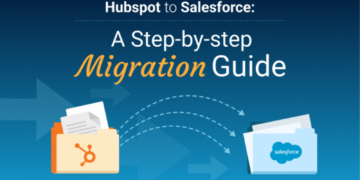While minimizing the impacts of increasing tariffs, businesses all across the world need to consider four crucial levers – supply chains, procurement costs, customers, and competitors. In this blog, we will discuss all these levers in great detail. So, let’s start:

Lever 1: Procurement Costs
For big enterprises like GM or Ford with products integrating parts like drives, microchips, and various other critical components, all the tariffed materials may account for up to 10% to 15% of the overall costs.

For small businesses, like metal stamping, the overall material costs are unlikely to be affected by increasing tariffs significantly. In such a case, suppliers will likely be domestic in nature and they are unlikely to face the tariffs.
Organizations Should:
- Make sure access to sources of expertise during the entire evaluation process, including manufacturing, engineering, regulatory, legal, and business teams
- Carefully evaluate the overall impact of the increase in the cost of the raw materials throughout the entire production chain – for instance, the impact of aluminum and steel tariffs from China may enhance the costs of raw materials by 2% to 5%
- Carry out in-depth risk analysis in order to determine the overall cost impact of different scenarios of tariff
- Focus on the total ownership cost, not just the pricing, in order to understand the true impact of the tariff on the overall costs.
Lever 2: Supply Chains
With quite a few alternatives, or with pretty limited capacity, we expect costs to rise even more during the entire supply chain than tariffs can alone indicate. In addition to these, margins should also be secured by merely looking for any long-term contracts with buyers and suppliers, so that uncertainty is reduced drastically.

Supply chain management involving sources from various service providers whose materials and goods may be subject to the increased tariffs, will need to identify various suppliers who will bear the brunt of the tariff, and if so, explore various other alternatives.
Organizations Should:
- Deepen relationships with the existing suppliers in order to define joint solutions so as to mitigate the impact of the overall tariffs
- Transformer Suppliers – precisely identify the long-term supply chain risks, comprising the impact of supply shortages on operating and manufacturing costs
- Make the changes in engineering so non-tariff alternatives can be also be used
- Negotiating with the different suppliers in order to share the burden of tariff
- Work with the existing suppliers of the source from the factories that may operate in various non-tariff countries
- Insource – Find the current opportunities in order to produce external items
- Look for various product reclassifications in order to place items out of the tariff bucket (for instance, specialist steel may be eligible for various tariff exemptions so that different prices are not affected in these types of cases).
Lever 3: Customers
While assessing whether and how much the cost increases can be passed on to clients, it is quite crucial to think about how the price responses vary. In addition to this, it depends on the relative value you attribute to the products and their ability to source anywhere.
Organizations should also try to predict the behavior of customers:

If your product is a key, and cannot be easily replaced, or the switch to another product is a big risk, customers are likely to be less price-sensitive (for instance, switching the products can be illegal or difficult). On the other way, if there are easily available alternatives or the customer margins are very tight, or you sell big quantities that are not crucial to their activities, you can expect a price sensitivity.
Lever 4: Competitors
While the competitors will face the same tariff pressures, they may also be affected differently. All their responses may vary as per the goals, supply cost structures, markets, target customers, chain options, regulatory impacts, geographic considerations, and strategies.

Organizations Should:
Look at the past competitor and their actions in order to identify clients or markets that are perceived as important
In addition to this, competitors may also try to mitigate price increases in critical markets whereas countering the overall impact on the lower bound by enhancing prices in different markets.
Organizations should:
- Precisely understand the key markets and create the best pricing strategies based on their critical markets and ready to defend it in light of the ’goals of competitors
So, which leverage will work the best for your company?
In general, it is crucial for the companies to make the overall decisions that offer them the flexibility, given the ongoing uncertainty related to tariff policies. Various global procurement companies should ensure that all these mechanisms are in place in order to monitor the changing developments and disseminate this crucial information to the key stakeholders, assess the potential impact of the changing tariff policies and use these 4 lifting tools in order to mitigate the impact.
























































